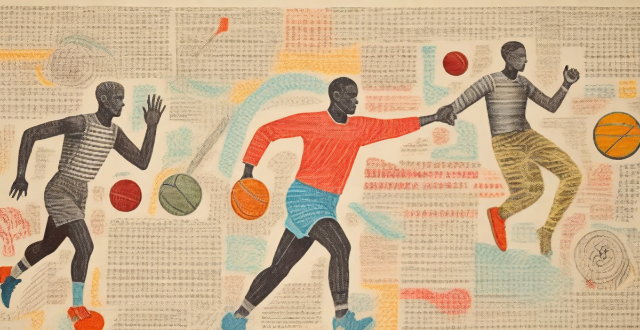The relationship between sports and art has evolved over time, reflecting societal shifts in values, technology, and cultural practices. In ancient civilizations, sports and art were often intertwined, serving both practical and aesthetic purposes. The Middle Ages saw a separation between the two due to religious influences, but by the Renaissance, there was a renewed interest in classical ideals that brought them closer again. Modern times led to specialization and convergence in areas such as advertising, while contemporary advancements in technology have allowed for unprecedented integration of sports and art through digital platforms and global spectacles.

The Evolution of the Relationship between Sports and Art over Time
The relationship between sports and art has undergone significant changes throughout history, reflecting societal shifts in values, technology, and cultural practices. This evolution can be broken down into several key periods, each marked by distinct characteristics and influences.
Ancient Times: Intertwined Beginnings
In ancient civilizations, sports and art were often intertwined, with physical activities serving both practical and aesthetic purposes. For instance, the Greeks celebrated their gods and heroes through the Olympic Games while also creating sculptures and poems to honor them. Similarly, the Romans enjoyed spectacles like gladiatorial combats that combined physical prowess with dramatic storytelling.
Key Points:
- Practical & Aesthetic Purposes: Sports provided physical training for warfare and entertainment, while art celebrated victories and heroic deeds.
- Religious & Cultural Significance: Both activities held deep religious and cultural meanings, often linked to mythology and beliefs.
Middle Ages to Renaissance: Separation and Renewal
During the Middle Ages, the Church's influence led to a separation between sports and art as the former was seen as distracting from spiritual pursuits. However, by the Renaissance, there was a renewed interest in classical ideals, which brought sports and art closer again. Artists like Leonardo da Vinci depicted athletes in motion, showcasing an appreciation for the human form in action.
Key Points:
- Church Influence: Sports were viewed with suspicion due to their association with pagan rituals and worldly distractions.
- Classical Revival: The Renaissance revival of classical themes reintroduced the celebration of the human body in motion within art.
Modern Times: Specialization and Convergence
As societies modernized, sports and art began to specialize into distinct fields. Athletes focused on performance enhancement, while artists explored new forms of expression. Yet, there remained a convergence in areas such as advertising, where visual arts played a crucial role in promoting sporting events and brands.
Key Points:
- Specialization: Clear distinctions emerged between professional athletes and artists, each with its own set of skills and audiences.
- Convergence in Media: Sports photography, film, and television broadcasting became art forms in their own right, capturing the drama and beauty of athletic competition.
Contemporary Era: Digital Integration and Globalization
Today, advancements in technology have allowed for unprecedented integration of sports and art. Digital platforms enable creative expression around sports, from fan art to virtual reality experiences that immerse viewers in the action. Globalization has also meant that sports events are now global spectacles, celebrated through diverse artistic mediums across cultures.
Key Points:
- Digital Platforms: Social media, video sharing sites, and online gaming communities foster artistic engagement with sports content.
- Global Spectacles: Major sporting events like the Olympics or World Cup inspire international artistic collaborations and cultural exchanges.
In conclusion, the relationship between sports and art has evolved from being closely intertwined in ancient times to becoming more specialized in modernity, only to see a resurgence of integration in our contemporary digital age. This ongoing evolution reflects broader societal changes and continues to shape both fields today.